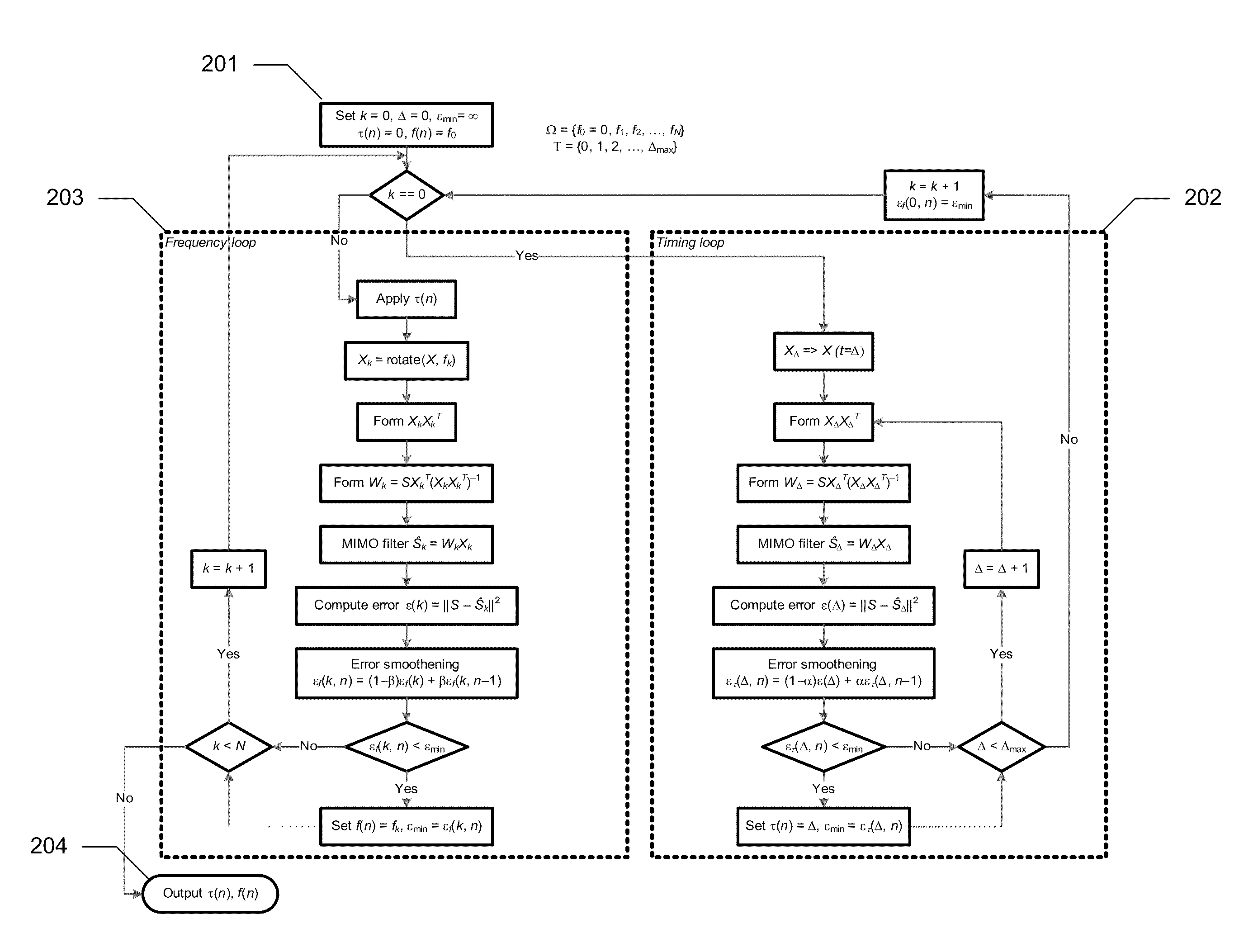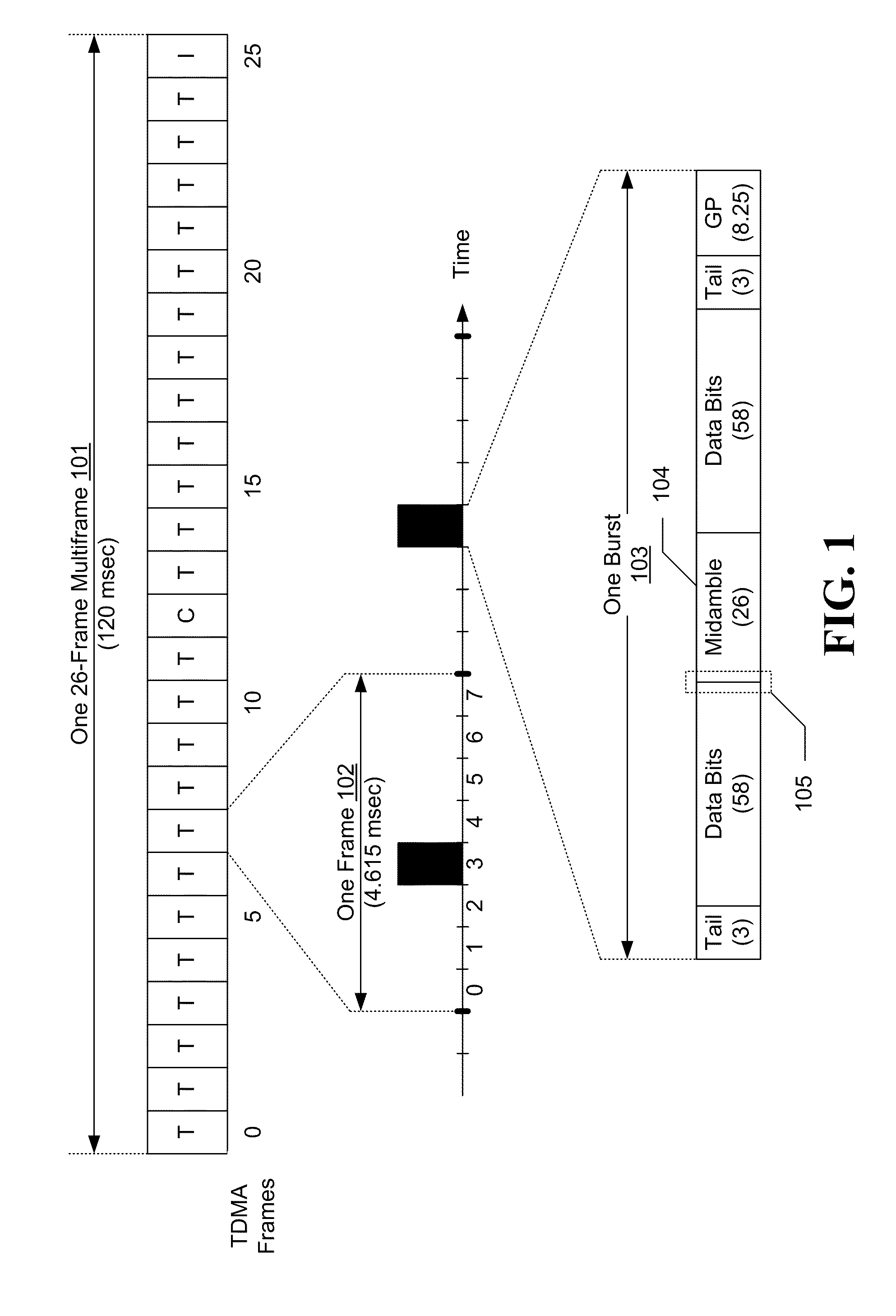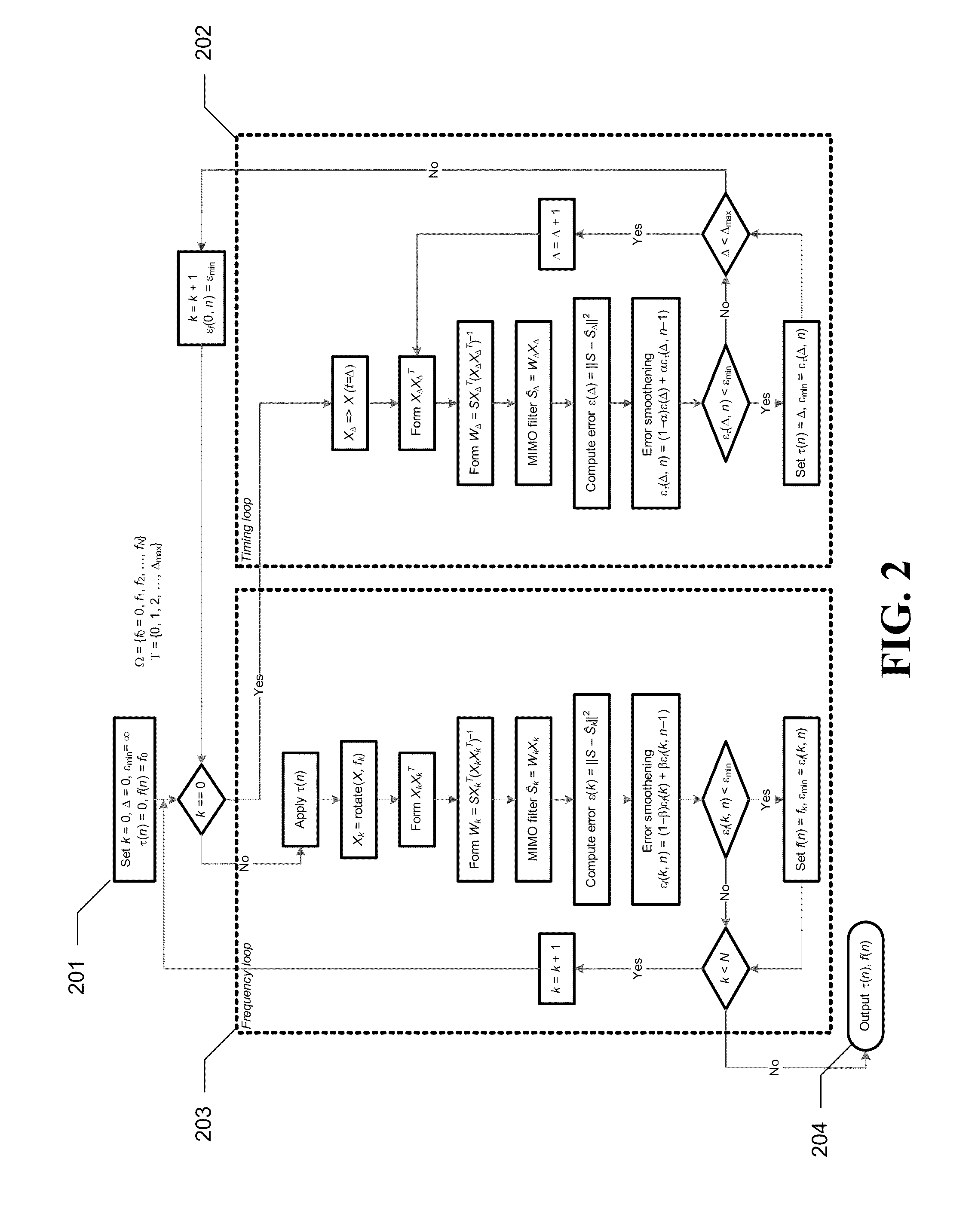Interference cancellation under non-stationary conditions
a non-stationary condition and interference cancellation technology, applied in the field of wireless communication, can solve the problems of significant deformation of non-coherent estimation, and achieve the effect of boosting the quality of received signals
- Summary
- Abstract
- Description
- Claims
- Application Information
AI Technical Summary
Benefits of technology
Problems solved by technology
Method used
Image
Examples
Embodiment Construction
FIG. 1 shows exemplary frame and burst formats in GSM. The timeline for downlink transmission is divided into multiframes. For traffic channels used to send user-specific data, each multiframe, such as exemplary multiframe 101, includes 26 TDMA frames, which are labeled as TDMA frames 0 through 25. The traffic channels are sent in TDMA frames 0 through 11 and TDMA frames 13 through 24 of each multiframe, as identified by the letter “T” in FIG. 1. A control channel, identified by the letter “C,” is sent in TDMA frame 12. No data is sent in the idle TDMA frame 25 (identified by the letter “I”), which is used by the wireless devices to make measurements for neighbor base stations.
Each TDMA frame, such as exemplary TDMA frame 102, is further partitioned into eight time slots, which are labeled as time slots 0 through 7. Each active wireless device / user is assigned one time slot index for the duration of a call. User-specific data for each wireless device is sent in the time slot assigne...
PUM
 Login to View More
Login to View More Abstract
Description
Claims
Application Information
 Login to View More
Login to View More - R&D
- Intellectual Property
- Life Sciences
- Materials
- Tech Scout
- Unparalleled Data Quality
- Higher Quality Content
- 60% Fewer Hallucinations
Browse by: Latest US Patents, China's latest patents, Technical Efficacy Thesaurus, Application Domain, Technology Topic, Popular Technical Reports.
© 2025 PatSnap. All rights reserved.Legal|Privacy policy|Modern Slavery Act Transparency Statement|Sitemap|About US| Contact US: help@patsnap.com



